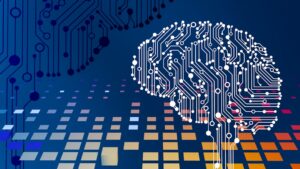Machine Learning Explained: A Comprehensive Guide for Beginners

Alt: white and black robot
Title: Machine Learning Image
Discover the fundamentals of machine learning with our comprehensive guide, covering essential concepts and real-world applications to kickstart your AI education journey.
What is Machine Learning?
Machine learning is a subset of artificial intelligence (AI) that focuses on building systems capable of learning from data, identifying patterns, and making decisions with minimal human intervention. By leveraging statistical methods, machine-learning algorithms analyze vast amounts of data—from numbers and words to images and clicks—to uncover hidden patterns and insights.
Types of Machine Learning
Machine learning can be categorized into three primary types:
Supervised Learning
Supervised learning involves training algorithms on labeled data, where the desired output is known. This approach helps the system learn the relationship between input data and the corresponding output. For example, recommendation systems on platforms like Netflix and Spotify use supervised learning to suggest content based on users’ past preferences.
Unsupervised Learning
In unsupervised learning, algorithms work with unlabeled data, identifying inherent patterns and structures without predefined outcomes. This method is often used in clustering similar data points together, which has applications in areas like market segmentation and cybersecurity.
Reinforcement Learning
Reinforcement learning is a type of machine learning where an agent learns to make decisions by performing actions and receiving feedback in the form of rewards or penalties. This approach is the foundation of advanced AI systems like Google’s AlphaGo, which mastered the game of Go through trial and error.
Real-World Applications of Machine Learning
Machine learning is integral to many services we use daily:
- Recommendation Systems: Platforms such as YouTube and Amazon use machine learning to recommend videos and products tailored to user preferences.
- Search Engines: Google and Bing employ machine learning algorithms to deliver relevant search results based on user queries.
- Social Media Feeds: Facebook and Instagram use machine learning to curate and display content that aligns with users’ interests.
- Voice Assistants: AI-powered assistants like Siri and Alexa rely on machine learning to understand and respond to user commands effectively.
Implications for Businesses and the Economy
The integration of machine learning into various industries is transforming business operations and driving economic growth:
- Enhanced Decision-Making: Businesses leverage machine learning to analyze data trends, enabling more informed and strategic decisions.
- Operational Efficiency: Automation through machine learning reduces manual efforts, streamlining processes and increasing productivity.
- Innovation and Competitiveness: Companies adopting machine learning stay ahead in the market by innovating products and services based on data-driven insights.
Getting Started with Machine Learning
Embarking on a machine learning journey can be daunting due to the vast amount of available information. Structured educational initiatives like GenAI.London provide comprehensive, week-by-week learning plans that combine theoretical knowledge with practical exercises. By utilizing curated resources from leading academics and fostering a collaborative community, GenAI.London ensures that learners of all levels can build a solid foundation in machine learning and deep learning.
Key Resources for Beginners
- Online Courses: Platforms like Coursera and edX offer introductory courses on machine learning fundamentals.
- Research Papers: Engaging with seminal papers provides deeper insights into advanced topics and emerging trends.
- Practical Projects: Hands-on projects and notebooks allow learners to apply theoretical concepts to real-world scenarios.
The Future of Machine Learning
As the global machine learning market continues to expand, reaching an estimated USD 117 billion by 2027, the demand for skilled professionals in AI and machine learning grows exponentially. Advancements in computational power, data availability, and algorithmic innovations will further propel the capabilities and applications of machine learning, making it an indispensable tool across various sectors.
Conclusion
Machine learning is revolutionizing the way we interact with technology, driving innovations that enhance our daily lives and transform industries. By understanding its core concepts and applications, beginners can embark on a rewarding journey into the world of AI and contribute to the advancements shaping our future.
Ready to dive deeper into machine learning and artificial intelligence? Visit Invent AGI to explore comprehensive resources and join a community of passionate learners and professionals.




